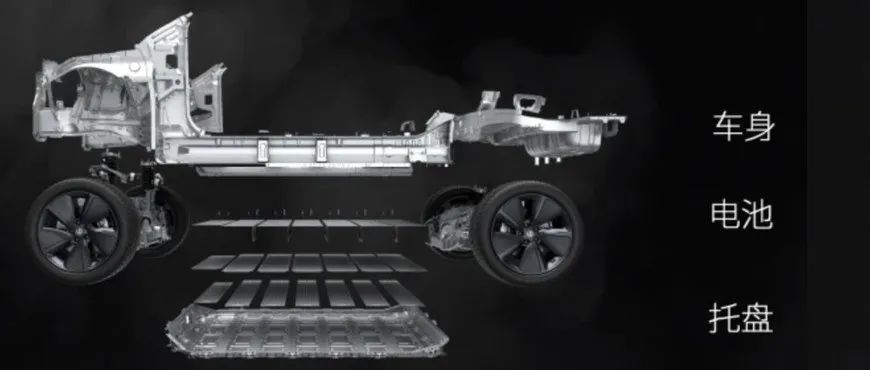Author: Zhu Yulong
Yesterday evening, many people were watching the CTC launch event of Leapmotor Motors. This project was designed by Song Yining, the Battery Product Line General Manager (Song’s business unit developed very fast).
Leapmotor Smart Power CTC technology refers to the integrated design of the battery, chassis, and lower body which simplifies product design and production processes. By redesigning the battery carrier tray, the entire lower body and battery carrier tray structure is coupled, which innovatively improves the installation process. By reducing redundant structural designs, the number of parts is effectively reduced, improving space utilization and system efficiency. This complements the body structure, significantly enhancing the battery’s impact resistance capability and body torsion stiffness.

Leapmotor’s Design
As mentioned above, from the perspective of CTC, the integrated battery structure has increased the vertical space by 10mm, and according to Leapmotor’s algorithm, the overall battery layout space has increased by 14.5% (uncertain).
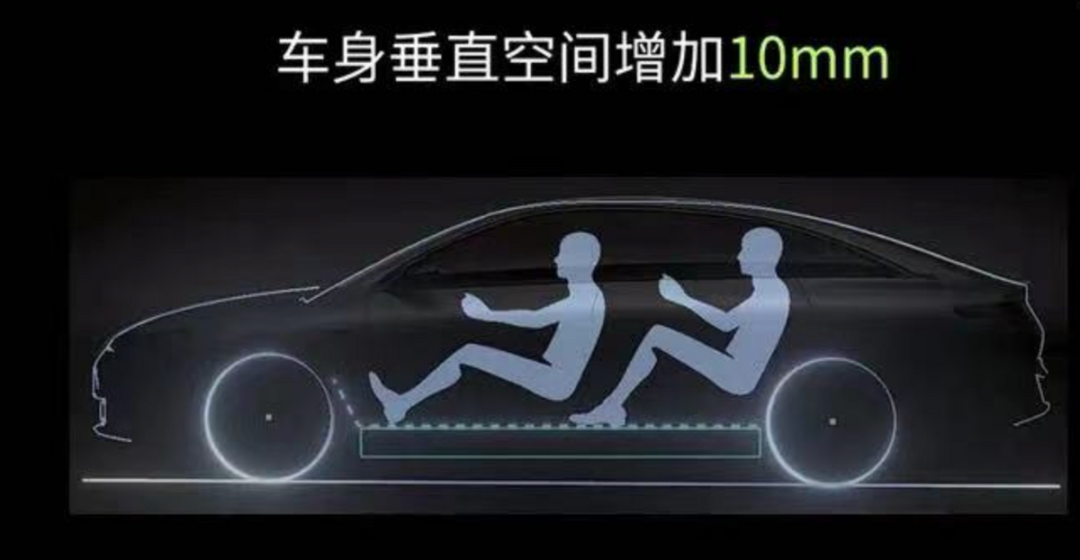
I understand that this is mainly based on the thickness of the battery pack:
- Tesla battery pack thickness: 125mm (excluding the protruding part)
- XPeng P7 battery pack thickness: 125mm (excluding the protruding part)
- The previous design for most battery packs was 140mm
From an industrial design perspective, there were some particularly thin designs before, with a target of about 110mm, so the benefit brought by this 10mm is expected to be 7.1%-9%, which is slightly different from the data given by Leapmotor Motors.
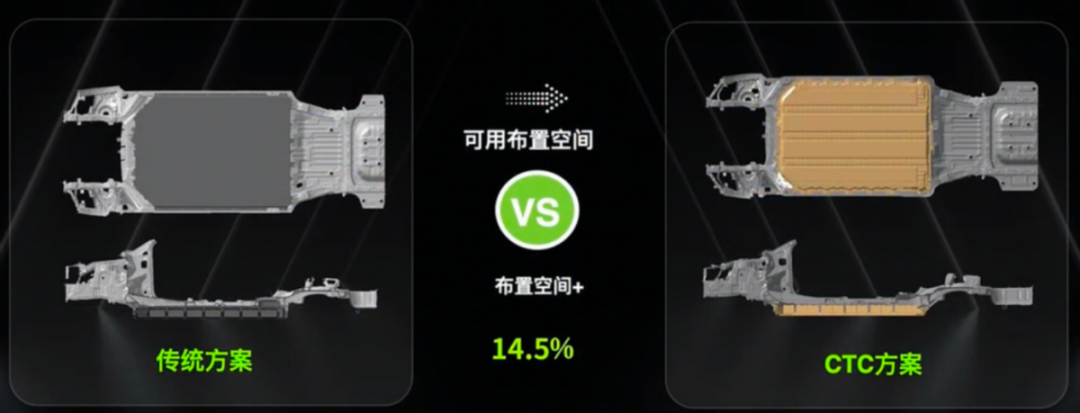
As all vehicle manufacturers are removing beams from the battery tray, regardless of CTP or CTC design, they need to combine the battery skeleton structure with the chassis body structure through a circular beam-style structure on the vehicle body. The key consideration here is that the battery shell does not need to bear the strength and stiffness requirements separately.
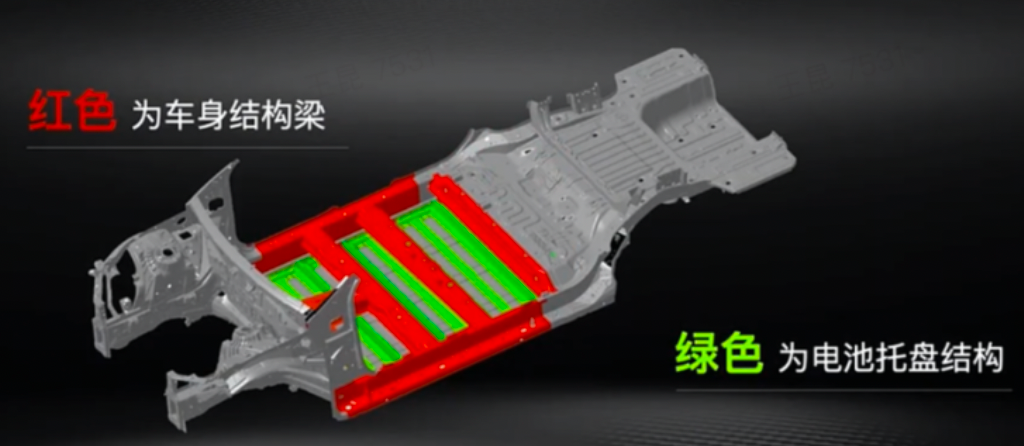
In terms of integration efficiency, around these 7 modules, the efficiency of the bottom water cooling board, insulation layer, and top insulation layer as a whole group, compared with the existing slitting tool (long or short), still has some gap in volume utilization.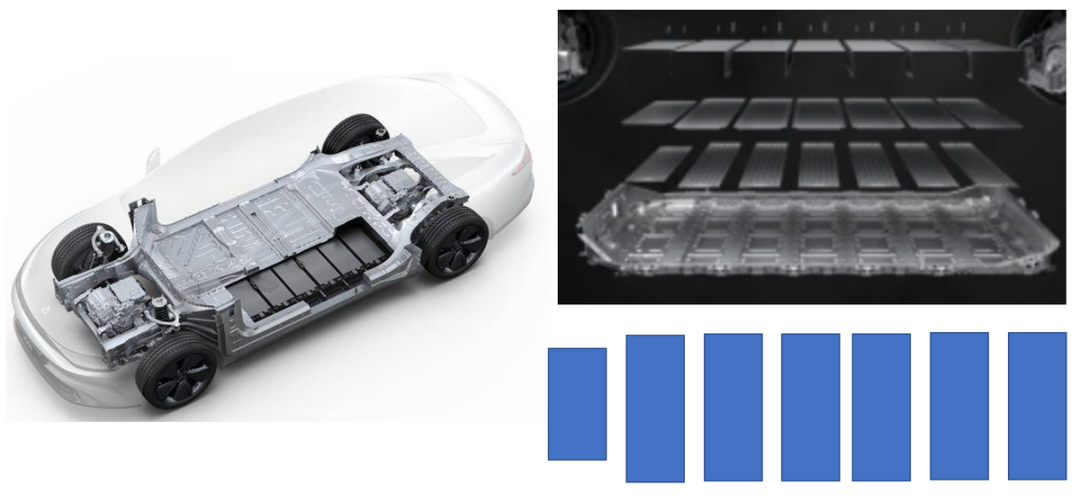
Cost-benefit Analysis of CTC
(Under the premise of not producing battery cells and retaining the module)
Here’s how I see this plan. The cost-benefit ratio brought about by CTC can be listed as follows for the whole vehicle enterprise without mastering the production of battery cells:
- Pros
In summary, the space in the Z direction is saved by 10mm through the combination of the upper cover and the gap. The other three advantages are not significant.

- Cons
As mentioned earlier, canceling the upper cover raises significant sealing challenges (vehicle body design to achieve battery sealing, CTC technology borrows the basic structure of the chassis, and uses the longitudinal and transverse beams of the car body to form a complete sealing structure). Additionally, for the design of battery segmentation, a strong insulation layer is required. If there is thermal runaway, the consumer will feel anxious from the floor as soon as possible because of the battery overheating.

Conclusion: In my opinion, CTC needs to be pushed further from the overall structure with battery cell innovation. Achieving savings in the Z direction by 10mm alone has some effect, but objectively speaking, there’s no revolutionary feature. CTC and skateboard chassis concepts have been popular recently, but quantitatively, the changes brought about by actual engineering improvements are only a small step forward.
This article is a translation by ChatGPT of a Chinese report from 42HOW. If you have any questions about it, please email bd@42how.com.
